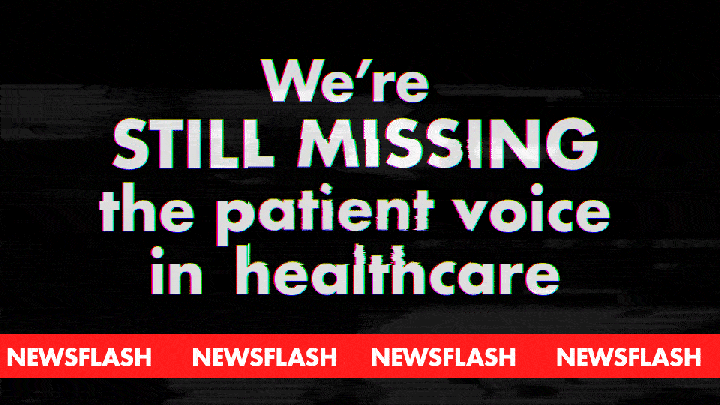Gasp! Are you the HiPPO in the room?
HiPPOs will destroy the best ideas, products, and launches. They can cost you millions of dollars and even tank your entire company.
HiPPO is an acronym for “highest-paid person’s opinion” or “highest-paid person in the office.” It’s something most innovators face.
A HiPPO is someone who is perceived to have more “authority” about how to configure a product, an offer, or a commercialization strategy. We tend to accept the HiPPOs perspective as the most valuable.
HiPPOs can come from virtually anywhere, but they often appear in the form of an executive, a board member, a consultant or the most senior person in the room.
They’re leaders who are so self-assured that they need neither others' ideas nor data to affirm the righteousness of their gut instincts and beliefs.
Relying on their experience and smarts, they’re quick to shoot down contradictory positions and dismiss input from others.
Now, these folks are not malicious. Normally, they have good intentions.
But nonetheless, we can’t let HiPPOs call the shots and derail our businesses.
News flash: We’re STILL missing the patient voice in healthcare — and it’s often the HiPPO’s doing
“Patient-centric” (and “customer-centric”) has been a hot buzzword for so long that it’s almost played out. But the truth is, thousands of companies are building patient-centric models and solutions without ever involving the patient — or any other customer group, for that matter.
That breaks my brain!
How can you truly be patient-centric if you don’t involve the patient in the process?
Most of the time our “patient-centric” models and solutions are REALLY company-centric. It’s more about what leadership wants.
Too often “patient-centric” is all smoke and mirrors when you look behind the curtain.
The HiPPO is often the driving force behind this phenomenon.
But it’s a hard habit to break when you’ve spent so much time building solutions FOR patients instead of WITH them.
I saw this firsthand with one of our clients.
The company hired us to help build and implement a co-creation plan to involve their patients into product development and the patient experience. We implemented a kickass plan (if I do say so myself) and gained incredibly valuable insights.
You know what happened?
They STILL went with their own old ideas!
Turns out that leadership didn’t care about the patient voice as much as they thought they did — even though most of the team was supposedly ready and willing to implement the co-creation data and insights we gathered.
Sigh. The HiPPO strikes again.
But this doesn’t have to be your fate. Here’s how you can take back control.
4 tips to take down the HiPPO and get back to the patient’s voice
1. Identify the HiPPO(s).
Ask yourself, who’s the HiPPO in your company?
Think about it.
If you don’t see any HiPPOs around, by gosh, it just might be YOU. A tough pill to swallow, yes. But you have to face the music that you could be the biggest obstacle for your company.
I’ve been guilty of this myself, and trust me, it’s detrimental to the business and team moral.
The sooner you admit it, the better your chances of turning things around and finding your path to profit.
Take a few minutes to take a personal inventory.
Forward this post to your colleagues or peers and schedule a meeting to talk about how these biases might be affecting your company, solution, and progress.
Evaluate your volume and sources of validation. Is there significant proof that you’re on the right track, or are you only working with a small (and personal) sample size?
You’ll be surprised by what you find when you have open, candid conversations!
2. Make decisions based on objective facts.
Ever heard the phrase, “Your opinion, although interesting, is irrelevant”?
It means that while the Owner, CEO, business unit leader, Product Manager, Board Member, consultant or advisor may have knowledge of the market and of the users, the HiPPO is not the market. Nor are they the users.
And, what the HiPPO believes about colors, names, markets, products, offers, etc. is really irrelevant! No matter what title or position they hold.
Opinions and emotions are subjective, but it’s difficult to argue with objective facts.
When you rely on patient data in the decision making process instead of human instinct, you’re already miles ahead.
There are two types of data that you can use:
Qualitative data is like patient and customer feedback and interviews, video surveys, and insight gleaned from focus groups and user testing.
Quantitative data is like business metrics, patient and customer metrics, product metrics, and other performance metrics.
I know. Gathering all this data is a lot of work. And it’s even more work to analyze it enough to be sure you’re drawing the right conclusions.
But there’s no way around it if you want to be grounded in facts instead of being led by a HiPPOs assumptions.
3. Check your biases.
You could have all the best data in the world — comprehensive, patient-driven, clear, and actionable. But if there are invisible biases steering the ship, that data is as good as useless.
Here’s the problem: it’s perfectly natural for us to have inherent biases. We’re only human, after all.
But these biases creep in when our guard is down. They set up camp in our brains and convince us to be complacent in our ideas.
And they can spell disaster and disappointment for those of us who fail to exercise our introspection and self-awareness.
Here are the 6 inherent biases I’ve seen most when I work with clients, colleagues, and partners:
1. Selection bias: “My friends, colleagues, and known sources validated my hypothesis, so it’s fully validated.”
2. Representativeness bias: “Five customers valued this feature. Therefore, the rest of the market will.”
3. Acquiescence bias: Similar to the phenomenon an innovator thinks, “I can’t tell them their baby is ugly.”
4. Confirmation bias: Looks for evidence that “confirms” current beliefs and ignores all else.
5. Overconfidence bias: “I already know the problem and the best way to solve it.”
6. Optimism bias: “I know everyone else is having trouble gaining adoption, but I won’t.”
4. Turn ideas into experiments.
If you’re having trouble redirecting a HiPPO’s attention to what really matters, try approaching things through the lens of running and validating an experiment. This way, you’re directing attention to the process and data, and helping to eliminate bias and opinions.
I love the story of Dan Siroker, co-founder of Optimizely. In his days as a Google associate product manager — straight out of school — he was tasked with pitching Google founders on a controversial idea.
He was advised by a mentor to present that idea as an experiment. In his pitch, he outlined a limited test, the data to be collected, the risks at hand, and how those risks could be avoided or mitigated.
They said yes. And ever since then, he’s learned the power of experimentation.
Dan says:
“The idea of ‘just running an experiment’ transformed the conversation from one that would have been traditionally made through the HiPPO method… into one that was about ‘how do we collect the right data to inform whether this experiment is working or not?’”
Search and destroy: HiPPO edition
Ask yourself: is a HiPPO running your company, product roadmap, or go-to-market strategy?
Remember that patients and customers outrank HiPPOs. And, objective facts outrank instincts.
It takes time and effort to root out the HiPPO and shift gears to a patient and data-driven plan. But it’s so damn worth it.
When HiPPOs are removed from the decision-making process, you’re much more likely to succeed.






